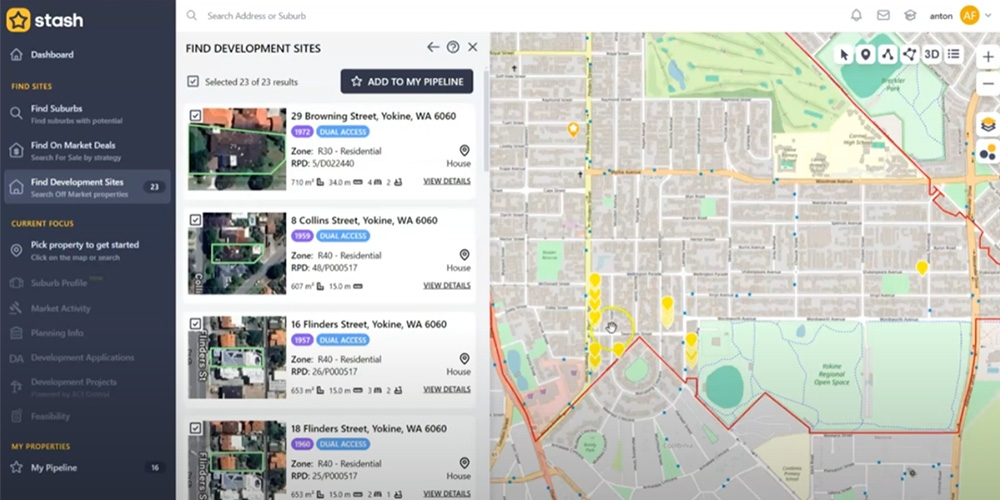
What are the risks in property development?
Seven mistakes developers make by overlooking the risks in property development.
Although it can be lucrative and you can make a lot of money, most people appreciate there are a lot of potential risks in property development. The problem is, most people don’t know what all the risks are. And when you don’t know the risks, there is potential to make costly errors and mistakes. The end result is committing to a loss making project, taking a significant hit on the project profits, or a project that can’t even get off the ground.
This article is going to look at seven of the most overlooked risks, and the mistakes developers make by not managing them correctly.
It’s important you know and understand these because if you don’t, you run the risk of a catastrophic project that will set you back years on your journey to financial freedom.
1. Tax risks in property development
In property development, you need to have an understanding of your tax obligations based on the type of activity you are undertaking.
There is no point in looking at “gross profit” showing 20% plus return on investment, if the reality is you are going to be giving half of this back to the tax department to cover GST and capital gains tax liabilities (CGT).
Once you are undertaking your second and third developments, and are developing more than 1 or 2 units with the intent to sell on completion, it is important to understand that the Australian Tax Office will view you business activity type as trading in business and commerce. That is to say the activity is transnational, and you will have to pay GST on the total sales amount (10% of the end value once sold), plus your CGT liabilities.
If you haven’t planned for this, you can owe the ATO a significant amount of money, payable on settlement of the end sales transactions. To this end you need to plan for your tax liabilities by speaking with your accountant and setting up an appropriate vehicle for the development to make your trading intent clear (e.g. trust, company, making yourself eligible to use the Margin scheme etc.) before you acquire a site and commence a project.
2. Finance acquisition risks in property development
One of the biggest risks in property development is not securing the right finance that is appropriate for different types of projects. If you don’t understand lenders policies and financial product suitability for different types and sizes of projects, you run the risk of proceeding with a project based on a feasibility study assumption that you will be able to borrow more money than you can, and at lower interest rates than will be a reality.
This will bring you unstuck usually once its too late – after you have purchased the site. Many developers delude themselves into thinking they can use residential home loan funding (lending up to 80%) with interest sub 3.5% to finance a development. Some lenders will still consider this for 2 lots, and very few for 3 or more (if you are experienced and have an existing relationship with the lender you might be lucky).
Residential home loans are designed for buy and hold with a loan period of 20 or more years – this is a very different risk profile to developing short term (12-18 months). As such, most lenders will assess the risk of the activity of development differently and offer commercial lending terms – fixed term loans, usually up to 60% of the project amount, a requirement for 100% or more of debt coverage with pre-sales, and interest rates upward of 6%.
Qualifying for this lending can be difficult, and can change the numbers in your feasibility spreadsheet drastically. To avoid this sort of error, get a reality check early by speaking to a finance broker (different to a mortgage broker) who has access to a variety of both home loan and commercial lending products, to find the most realistic and workable solution for your project.
3. Commercial lending conditions
There is nothing wrong with commercial lending products – in many respects they are the far more suitable product for property development where the intent is to sell on completion. The more developments you do, the more comfortable you will have to become with commercial lenders.
They will actually lend on far more cost items, capitalise the interest payments in some instances, and even assess the on completion value of the end products (home loan products do not do this).
Where people come unstuck – You need to understand the commercial loan term is fixed term – that is to say if you broker a 12 month term, the lender wants their money back in 12 months. If you have had time delays or problems and haven’t wrapped the project up in time, this can be disastrous. The lender will either exercise their right to take the project off you, or you will have to find last minute, expensive bridging finance to finish the project (interest upwards of 20%) and pay penalties.
Avoid this risk in property development by adding both time and cost contingencies into your loan term. This means not borrowing to the max, and adding a few months (3-6) onto the loan term. This is to cover project delays, delayed sales period and settlements, and provides you breathing room to renegotiate loan terms before the end if things are looking hairy.
This will help you to avoid one of the biggest risks in property development – losing your project in the home stretch.
4. Trusting the selling agents interpretation of planning regulations
It is staggering how many people don’t do any of their own due diligence into a sites development potential before they commit to buying it. They simply take the selling agents word for it.
The problem is the selling agent is just that, a salesman – he is not as surveyor, he is not a town planner, he is not a developer. Sometimes he may be right, sometimes he may be wrong – all too often however they are not experts, and can make errors themselves (everyone is human!).
The problem is once you have settled on a site based on their advice, it is too late for a refund, even if it is wrong. Your only avenue for recourse is an expensive, messy legal proceeding. You don’t want to be involved in any of this. Avoid this by doing your own research – either learn how to check planning regulations yourself, or engage an expert for assistance.
Conversely, if you do have a good understanding of the planning regulations, you will sometimes be able to steal development sites for a bargain from agents who may have missed a sites full development potential and undervalued it on the open market.
5. Buying a site based on development potential, not numbers
Just because you can subdivide a site into 2, 3 or 4 lots, or build an apartment tower on it, doesn’t automatically mean it will make money. Many people fall into this trap.
When buying a development site, you need to look beyond the development potential. You actually need to stack the numbers before you settle on the site. This mean doing feasibility studies to determine costs, revenue and a forecast return on investment, before you proceed to settlement. This also means being prepared to walk away if the numbers aren’t promising.
You need to make your decisions based on real numbers, not on hopes and dreams, otherwise you will likely pay too much for a site or pick up a lemon.
Feasibility studies will take time, and cost money, but are essential to finding the right project that will make you money.
6. More is always better
Just because you can build 12 apartments on a site, or subdivide it into 5 lots, doesn’t mean this is the best and most profitable design outcome. You need to do research to determine this.
Highest yield does not always determine the best design outcome – the market does. You need to study the local market where your site is and speak to local agents. This research will provide valuable feedback on what types of products will sell well and which ones don’t.
Second to this, the added cost of higher yield (e.g. needing to go two storey over single storey) does not always stack up at the back end against the valuation lift. For example; you might be surprised to find that your site might be better suited to 3 larger single storey houses over 5 two storey town houses. If you work a design solution that the market wants and focuses on return over yield you will do well.
Remember, a deal can look great on paper, however if you can’t sell the end product, you will never crystallise a return or profit.
7. Soil condition risks in property development
One of the quickest places to lose money is a hole in the ground – nothing truer has ever been said.
An often overlooked risk in property development by the unwary investor is the soil condition of a development site.
Most local governments now place the responsibility on you, the developer, to remediate a site so it can accommodate its intended development. This means if your site has a poor bearing capacity (e.g. clay soil) there is going to be a significant price tag attached for earthworks, drainage and potentially retaining before housing can go on top of it. This price tag can sink a project.
If you are looking at sites with a high risk of clay soils (particularly in Perth’s eastern suburbs) it behooves you to perform geotechnical site investigation before you start a project tor buy a suite, to determine the extent of remediation required. There is a lot of cheap development sites in the eastern suburbs of Perth that snare the unwary novice developer – they are cheap for a reason.
This article has hopefully got you thinking a bit more about some of the major risks in property development in Western Australia.
Remember there is nothing wrong with risks, the problem is not being aware of them, and not knowing how to manage them appropriately.
If you want to remove the uncertainty and learn more about these risks, how they are managed, tax, finance, soil condition and planning regulations are all discussed in great detail in our 225 page Infill Property Developer Guide-book and correlating Online Course, amongst a raft of other risk considerations and topics.




